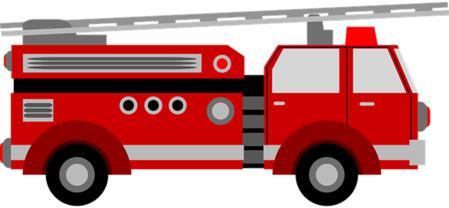Introduction
In an unpredictable world, home safety should be a top priority for every homeowner. Natural disasters, accidents, and unexpected emergencies can strike at any moment, leaving us vulnerable if we’re not prepared. Home emergency planning is the key to ensuring that you, your family, and your property are protected when disaster strikes. In this comprehensive guide, we will explore the essential aspects of home emergency planning, from creating a solid emergency plan to stockpiling supplies, and understanding the different types of disasters that can affect your home.
The Importance of Home Emergency Planning
Home emergency planning is not a mere formality; it is a crucial step towards safeguarding your loved ones and property. We often hear about devastating events in the news, such as hurricanes, earthquakes, wildfires, and more. While we hope these disasters will never happen to us, it’s essential to be proactive and ready for any unforeseen circumstances.
The Benefits of Being Prepared
When you have a well-thought-out emergency plan in place, you can:
- Ensure Family Safety: Your family’s well-being is your top priority. Having an emergency plan can save lives during a crisis.
- Minimize Property Damage: With the right preparations, you can reduce the risk of property damage, ensuring a smoother recovery process.
- Provide Peace of Mind: Knowing you’re prepared for emergencies can alleviate anxiety and fear during uncertain times.
- Aid in Community Resilience: Communities that are well-prepared for emergencies can recover more quickly and effectively.
Creating Your Home Emergency Plan
Identifying Potential Risks
The first step in home emergency planning is to identify the potential risks in your area. The types of disasters you should prepare for may vary depending on your geographical location. Common natural disasters include hurricanes, tornadoes, earthquakes, floods, and wildfires. Additionally, consider other risks like power outages, home intrusions, or medical emergencies.
Assembling Your Emergency Team
Every household should have an emergency team with clearly defined roles. Assign responsibilities to family members and discuss who will do what during an emergency. Make sure everyone knows how to contact each other if separated and have a designated meeting point.
Evacuation Plan
Develop an evacuation plan that includes multiple escape routes from your home. Ensure that everyone knows these routes and where to meet outside. If you have pets, include plans for their safety as well.
Communication
Establish a communication plan that includes a list of emergency contacts, both local and out-of-town. It’s also crucial to have an alternative means of communication in case regular phone lines are down.
Building an Emergency Kit
A well-prepared home should have an emergency kit ready to go. This kit should contain essential supplies to sustain your family for at least 72 hours. Here’s a checklist of items to include:
- Water: One gallon of water per person per day for drinking and sanitation.
- Non-Perishable Food: Include canned food, dried fruits, and high-energy snacks.
- First Aid Kit: Bandages, antiseptic wipes, medications, and any necessary medical supplies.
- Flashlights and Batteries: Ensure you have a reliable source of light.
- Battery-Powered or Hand-Crank Radio: Stay informed about the situation.
- Multi-Tool and Supplies: Include a Swiss Army knife or a similar tool, along with duct tape, a whistle, and a manual can opener.
- Personal Hygiene Items: Sanitary supplies, hand sanitizer, and wet wipes.
- Cash: In case electronic payment methods are unavailable.
- Important Documents: Copies of identification, insurance policies, and other essential documents.
- Warm Clothing and Blankets: Be prepared for changing weather conditions.
- Chargers for Electronics: Keep your devices powered for communication and information.
Home Safety Improvements
In addition to your emergency kit, there are several home safety improvements you can make to mitigate potential risks.
Secure Heavy Furniture
Anchoring heavy furniture to the wall can prevent it from toppling over during an earthquake or severe weather.
Install Smoke Alarms and Carbon Monoxide Detectors
These early warning systems are critical for fire safety and preventing carbon monoxide poisoning.
Reinforce Windows and Doors
Hurricane shutters or reinforced glass can help protect your home during severe storms.
Properly Maintain Electrical and Gas Systems
Regular inspections and maintenance of your electrical and gas systems can prevent dangerous malfunctions.
Create a Fire Escape Plan
Have a fire escape plan with designated meeting points and fire extinguishers on hand.
Understanding Different Types of Disasters
To be fully prepared, it’s important to understand the various types of disasters that can affect your home.
Natural Disasters
- Hurricanes: These intense tropical storms can cause extensive damage through strong winds, heavy rain, and storm surges.
- Tornadoes: Tornadoes are violent windstorms that can destroy buildings and homes in their path.
- Earthquakes: Sudden ground shaking can lead to structural damage and pose a risk to life and safety.
- Floods: Flooding can result from heavy rainfall, melting snow, or dam failures, leading to property damage and displacement.
- Wildfires: Uncontrolled wildfires can spread rapidly, causing widespread destruction.
Man-Made Disasters
- Power Outages: Extended power outages can disrupt daily life and pose a risk to individuals dependent on electrical medical devices.
- Home Intrusions: Security measures can help protect your home from burglaries and break-ins.
- Chemical Spills: These incidents can lead to health hazards and require immediate evacuation.
- Industrial Accidents: Accidents at nearby factories or industrial sites may pose threats to your community.
Testing and Maintenance
Home emergency planning is an ongoing process. Regularly review and update your emergency plan and supplies to ensure they remain effective. Conduct practice drills with your family to ensure everyone knows what to do in an emergency.
Conclusion
Home emergency planning is not a one-time task; it’s a commitment to safeguarding your family and property. By creating a comprehensive plan, assembling an emergency kit, making home safety improvements, and understanding the types of disasters that can affect your area, you can significantly reduce the risks associated with emergencies. Being prepared ensures that when disaster strikes, you and your loved ones can navigate through the chaos with confidence and resilience. Don’t wait until it’s too late—start your home emergency planning today.











Add Comment